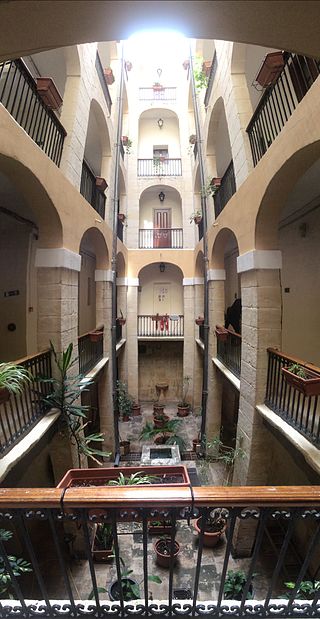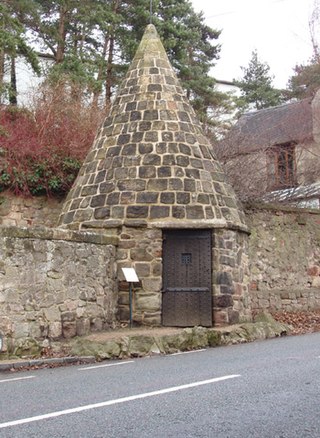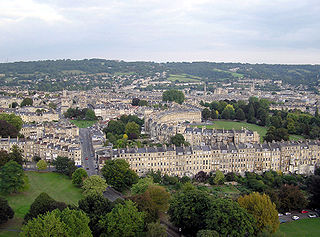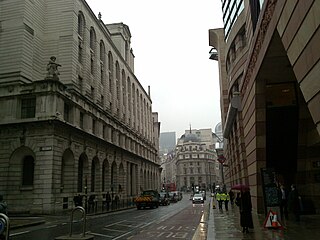Related Research Articles

A debtors' prison is a prison for people who are unable to pay debt. Until the mid-19th century, debtors' prisons were a common way to deal with unpaid debt in Western Europe. Destitute people who were unable to pay a court-ordered judgment would be incarcerated in these prisons until they had worked off their debt via labour or secured outside funds to pay the balance. The product of their labour went towards both the costs of their incarceration and their accrued debt. Increasing access and lenience throughout the history of bankruptcy law have made prison terms for unaggravated indigence obsolete over most of the world.

James Duckett was an English Catholic layman and martyr, executed at Tyburn for printing Catholic devotionals.

A village lock-up is a historic building once used for the temporary detention of people in England and Wales, mostly where official prisons or criminal courts were beyond easy walking distance. Lockups were often used for the confinement of drunks, who were usually released the next day, or to hold people being brought before the local magistrate. The archetypal form comprises a small room with a single door and a narrow slit window, grating or holes. Most lock-ups feature a tiled or stone-built dome or spire as a roof and are built from brick, stone and/or timber.

The Wood Street Compter was a small prison within the City of London in England. It was primarily a debtors' prison, and also held people accused of such misdemeanours as public drunkenness, although some wealthier prisoners were able to obtain alcohol through bribery. The prison was built and opened in 1555, replacing the earlier Bread Street Compter, from which many prisoners were transferred. Wood Street was closed and replaced by Giltspur Street Compter in 1791.
The Borough Compter was a small compter or prison initially located in Southwark High Street but moved to nearby Tooley Street in 1717, where it stood until demolished until 1855. It took its name from 'The Borough', a historic name for the Southwark area of London on the south side of the River Thames from the City of London. This replaced a lock-up as part of the city's court house under the jurisdiction of the Lord Mayor and Court of Aldermen of the city, and their High-Bailiff of Southwark. This first court house was converted from the old church of the parish St Margaret. A floor was made across the level of the church's gallery and the windows below that were blocked in, the Court Room being on the first floor. This structure was destroyed in the Great Fire of Southwark in 1676.

The Giltspur Street Compter was a compter or small prison, designed by English architect and surveyor George Dance the Younger, mainly used to hold debtors. It was in Giltspur Street, Smithfield, close to Newgate, in the City of London, between 1791 and 1853.

Giltspur Street is a street in Smithfield in the City of London, England, running north–south from the junction of Newgate Street, Holborn Viaduct and Old Bailey, up to West Smithfield, and it is bounded to the east by St Bartholomew's Hospital. It was formerly known as Knightsriders Street, from the knights riding at the tournaments in Smithfield.

Poultry Compter was a small prison that stood at Poultry, part of Cheapside in the City of London. The compter was used to lock up minor criminals and prisoners convicted under civil law and was run by one of the City's sheriffs. It operated from the 16th century until 1815. It was pulled down in 1817 and replaced with a chapel.

Ward, Lock & Co. was a publishing house in the United Kingdom that started as a partnership and developed until it was eventually absorbed into the publishing combine of Orion Publishing Group.

Sir Wolstan Dixie was an English merchant and administrator, and Lord Mayor of London in 1585.

The Stuart period in London began with the reign of James VI and I in 1603 and ended with the death of Queen Anne in 1714. London grew massively in population during this period, from about 200,000 in 1600 to over 575,000 by 1700, and in physical size, sprawling outside its city walls to encompass previously outlying districts such as Shoreditch, Clerkenwell, and Westminster. The city suffered several large periods of devastation, including the English Civil War and the Great Fire of London, but new areas were built from scratch in what had previously been countryside, such as Covent Garden, Bloomsbury, and St. James's, and the City was rebuilt after the Fire by architects such as Christopher Wren.
Ramsay Wood is the author of two sui generis modern novels which aim – via vernacular spiels within complex frame-story narratives – to popularize the pre-literate, oral story-listening drama of multicultural animal fables mimed and declaimed along the ancient Silk Road. His books blend The Jatakas Tales, The Panchatantra and the likely role of Alexander the Great's legacy in "bringing the Aesopian tradition to North India and Central Asia" via Hellenization in Central Asia and India. Wood's Kalila and Dimna – Selected Fables of Bidpai was published by Knopf in 1980 with an Introduction by Nobel laureate Doris Lessing.
Edward Allde was an English printer in London during the Elizabethan and Jacobean eras. He was responsible for a number of significant texts in English Renaissance drama, including some of the early editions of plays by William Shakespeare.
William Fennor, also known as Wilhelmus Vener, was an English bilingual English/Dutch poet and rogue of the Elizabethan and Jacobean periods.

The buildings and architecture of Bath, a city in Somerset in the south west of England, reveal significant examples of the architecture of England, from the Roman Baths, to the present day. The city became a World Heritage Site in 1987, largely because of its architectural history and the way in which the city landscape draws together public and private buildings and spaces. The many examples of Palladian architecture are purposefully integrated with the urban spaces to provide "picturesque aestheticism". In 2021, the city was added to a second World Heritage Site, a group of historic spa towns across Europe known as the "Great Spas of Europe". Bath is the only entire city in Britain to achieve World Heritage status, and is a popular tourist destination.
John Fryer was an English physician, humanist and early reformer. He was a Member of the Parliament of England for Portsmouth in 1545.

Poultry is a short street in the City of London, which is the historic nucleus and modern financial centre of London. It is an eastern continuation of Cheapside, between Old Jewry and Mansion House Street, towards Bank Junction.
John Cardmaker was an English Protestant martyr.

The following is a timeline of the history of Reading, the county town of Berkshire in England.
Richard Vennar was an English writer, known particularly for his attempt to stage his play England's Joy.
References
- ↑ Phillip Shaw (1947). The Position of Thomas Dekker in Jacobean Prison Literature. PMLA 62 (2): 366–391 JSTOR 459268
- ↑ The Cambridge History of English and American Literature in 18 Volumes (1907–21). Volume IV. Prose and Poetry: Sir Thomas North to Michael Drayton. XVI. London and the Development of Popular Literature. § 23. Discoverie of the Knights of the Poste.